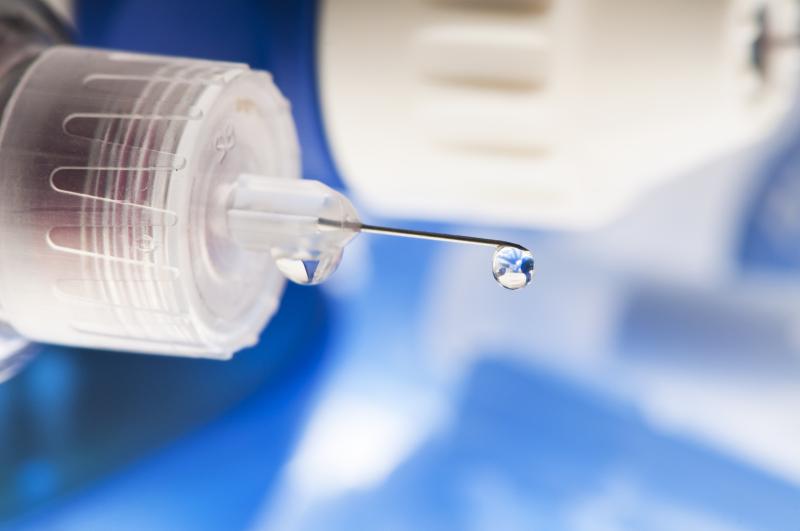
Adults with type 1 diabetes mellitus (T1DM) may fare better with continuous subcutaneous insulin infusion (CSII) therapy, which is associated with lower glycated haemoglobin (HbA1c) variability compared with multiple daily injection (MDI) treatment, as shown in a recent study.
“T1DM is characterized by day-to-day glucose fluctuations, much more so than in type 2 diabetes mellitus (T2DM),” according to the investigators, adding that glycaemic variability (GV) is an independent risk factor for the development of chronic complications in both T1DM and T2DM. [Diabetes Metab Res Rev 2006;22:198-203; BMJ 2015;350:h3234; J Clin Endocrinol Metab 2016;101:3257-3263]
“HbA1c variability, a simple and low-cost measure, thought to modulate chronic diabetes complication risk, should be a routine tool to assess glycaemic control in clinical practice and in clinical research and trials,” they said.
The analysis included 506 T1DM patients (mean age, 38 years; 50 percent female; mean disease duration, 17 years), among whom 164 were on CSII and 342 were on MDI (mean baseline HbA1c, 7.8 percent and 8.0 percent, respectively). All patients were followed for a mean or 4.1 years.
Compared with MDI, CSII use resulted in lower GV (HbA1c standard deviation [SD]: 0.5 percent vs 0.7 percent; HbA1c coefficient of variation [CV]: 6.7 percent vs 9.3 percent; p-both<0.001). [BMJ Open 2019;9:e033059]
In the group of 56 patients who switched from MDI to CSII, mean HbA1c fell by 0.4 percent (p<0.001) during the follow-up. The switch also lowered HbA1c variability, with HbA1c SD dropping by 0.3 percent from pre- to post-CSII (p<0.001) and HbA1c CV by 3.1 percent (p=0.004).
“[W]e report the novel finding that CSII therapy was associated with lower long-term GV than MDI therapy, despite similar mean HbA1c levels across the two modalities,” the investigators said. “[This] lower HbA1c variability … may underpin or at least contribute to the observed reduced chronic complication and death rates among CSII users.” [Diabetes Care 2008;31:2198-2202; PLoS One 2016;11:e0153033; Diabetic Medicine 2015;32:1445-1452]
Nevertheless, they acknowledged the possibility of divergent effects of insulin treatment modality on measures of short-term (based on blood or interstitial fluid glucose level) and long-term GV.
“Recent consensus guidelines have recommended that continuous glucose monitoring (CGM) should occur for 14 days to accurately assess glucose profile, and therefore the inconsistencies in GV benefit may reflect inadequate CGM data. Furthermore, improvements in short-term GV with CSII may be impacted by deterioration in HbA1c overtime, highlighting the importance of assessing long-term GV,” the investigators pointed out. [Diabetes Care 2017;40:1631-1640; Pediatr Diabetes 2013;14:504-511]
The next step in the research is to conduct confirmatory studies in both adult and paediatric T1DM populations, to establish the link of both short-term and long-term measures of GV to hard clinical events, as well as to determine the effects of pumps with real-time CGM, closed loop insulin delivery systems, bihormonal pumps and insulin adjunct therapies (such as sodium glucose cotransporter 2 (SGLT2) inhibitors, metformin and incretin-modulating drugs) on GV.
“It is imperative that further research addresses the cost benefits of CSII therapy and of RT-CGM therapy to facilitate equitable technology access. Analyses of long-term outcome data to determine recommended HbA1c GV targets are also desirable,” they said.